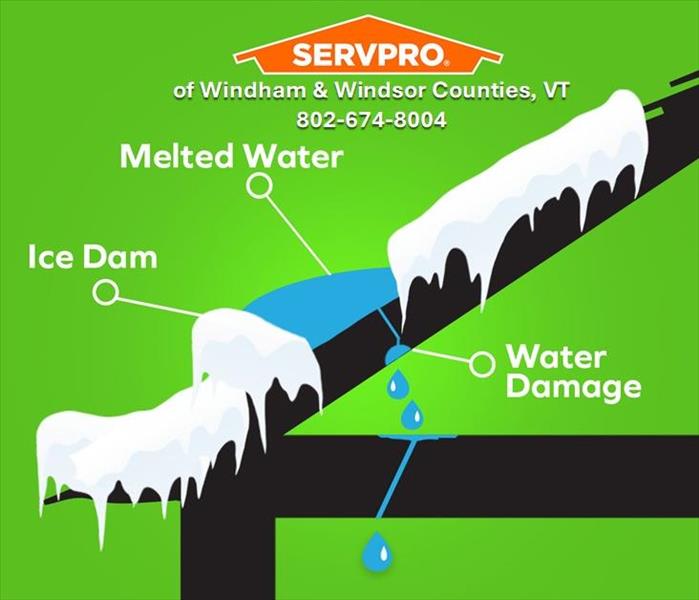Information on Ice Dams
1/11/2022 (Permalink)
It's January, and we are sitting squarely in the middle of Winter. Here in New England, that can mean a long list of potential issues for your home. One common damage causing issue are ice dams. Ice dams form as a result of heat loss through the roof of a home. A ridge of ice that forms at the roof's edge and prevents water from draining creates the ice dam. Ice dams can become a nuisance to your property when water backs up behind the dam and works its way under shingles and begins to leak into the home. Insulation, walls, ceilings, and other areas can become affected. Water that is not dried quickly and thoroughly can eventually lead to mold growth.
Hot water can be used to melt the ice dam but do so gently. Heat cables can be installed on the roof prior to the winter and snow months. Raking your roof consistently around the edges following snowfall will help to prevent ice dams as well. Keep your gutters clean and downspouts clear to avoid slowly draining gutters which could potentially cause ice dams.
If an ice dam develops, do not use rock salt or sodium chloride to attempt to clear the ice dam. This material is highly corrosive and can cause damage to roofing, gutters & downspouts and siding. Deicer is better. A sock or pantyhose can be filled with deicer and placed vertically on the roof to break up the ice dam. The melted areas where the deicer was placed can allow drainage channels for the excess water.





 24/7 Emergency Service
24/7 Emergency Service
